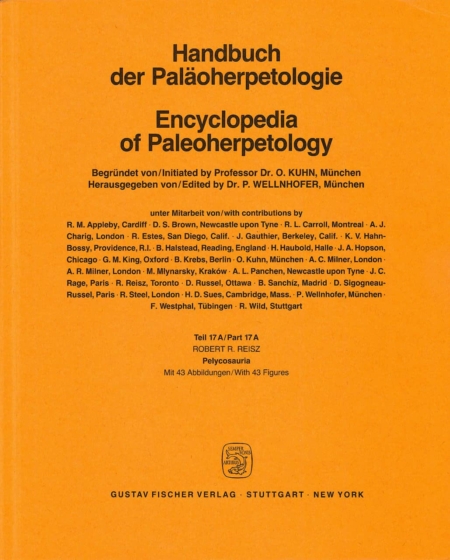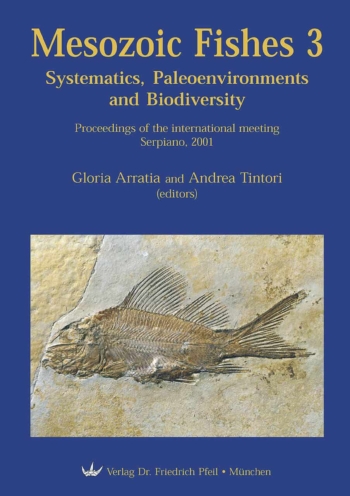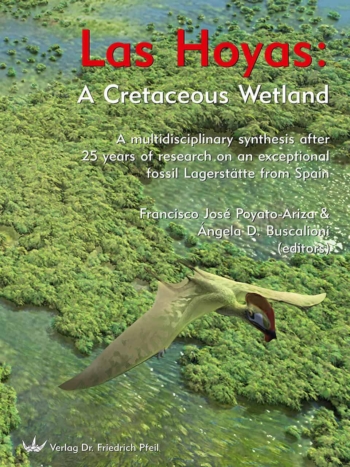Historical Background 1
General Osteology 7
Skull 7
Dermal Skull Roof 8
Dermal Bones of the Palate 15
Ossifications of the Palatoquadrate Cartilage 17
Ossifications of the Braincase 18
Mandible 23
Stapes 25
Dentition 25
Axial Skeleton 26
Ribs 33
Gastralia 34
Appendicular Skeleton 34
Limbs 41
Systematic Review 56
Order Pelycosauria COPE 1878 56
Suborder Caseasauria WILLISTON 1912 57
Family Eothyrididae ROMER and PRICE 1940 58
Eothyris ROMER 1937 58
Oedaleops LANGSTON 1965 59
Family Caseidae WILLISTON 1912 59
Casea WILLISTON 1910b 59
Caseopsis OLSON 1962 60
Cotylorhynchus STOVALL 1937 60
Angelosaurus OLSON and BEERBOWER 1953 61
Ennatosaurus EFREMOV 1956 62
Caseid of Uncertain Position 62
Caseoides OLSON and BEERBOWER 1953 62
Tentatively Assigned to the Caseidae 62
Phreatophasma EFREMOV 1954 62
Suborder Eupelycosauria KEMP 1982 63
Family Varanopseidae ROMER and PRICE 1940 63
Varanops WILLISTON 1914 64
Aerosaurus ROMER 1937 64
Mycterosaurus WILLISTON 1915 65
Varanodon OLSON 1965 65
Tentatively Assigned to the Varanopseidae 66
Basicranodon 66
Ruthiromia 66
Family Ophiacodontidae NOPCSA 1923 66
Archaeothyris REISZ 1972 67
Clepsydrops COPE 1875 67
Stereorhachis GAUDRY 1880 68
Baldwinonus ROMER and PRICE 1940 68
Stereophallodon ROMER 1937 68
Ophiacodon MARSH 1878 69
Family Edaphosauridae COPE 1882 71
Edaphosaurus COPE 1882 71
Family Sphenacodontidae MARSH 1878 74
Subfamily Haptodontinae 74
Haptodus GAUDRY 1886 74
Subfamily Secodontosaurinae 75
Secodontosaurus ROMER 1936 75
Subfamily Sphenacodontinae 76
Macromerion ? schwartzenbergii FRITSCH 1889 76
Neosaurus NOPCSA 1923 76
Bathygnathus LEIDY 1854 76
Sphenacodon MARSH 1878 77
Ctenospondylus ROMER 1936 78
Dimetrodon COPE 1878d 79
Sphenacodontidae Incertae Sedis 82
Pelycosauria Incertae Sedis 82
Colobomycter 82
Delorhynchus 83
Echinerpeton 83
Glaucosaurus 83
Lupeosaurus 83
Milosaurus 84
Nitosaurus 84
Protoclepsydrops 84
Tetraceratops 84
Thrausmosaurus 85
Trichasaurus 85
Xyrospondylus 85
Varanosaurus BROILI 1904 85
Reptilia Tentatively Assigned to the Pelycosauria 86
Anningia 86
Elliotsmithia 86
Forms Incorrectly Assigned to the Pelycosauria 86
Phylogenetic Relationships 87
Geographical and Geological Distribution 94
Literature Cited 97
Index 101
HPH 17A • Pelycosauria
1986. [English] – VIII, 102 pp., 43 figures.
25,5 x 20,5 cm, Paperback.
Series: Handbook of Paleoherpetology
76,69 € Original price was: 76,69 €.60,00 €Current price is: 60,00 €.
plus shipping costs
Historical Background
Pelycosaurian reptiles have been the subject of study for over a century. The first pelycosaur found was described by LEIDY in 1854. A slab of sandstone containing part of the left side of the face of the sphenacodont Bathygnathus was discovered in Prince Edward Island, Canada, during the digging of a well. The specimen was originally identified as the lower jaw of an archosaur. Although OWEN (1876) noted the resemblance of Bathygnathusto the African therapsids, only six decades after its original description was its proper status recognized (VON HUENE 1905; CASE 1905).
Most of the early work on pelycosaurs was done by E. D. COPE. He was the first to describe pelycosaurian remains from the United States, and in a series of papers published between 1875 and 1897 COPE laid the groundwork for later studies. In his publication on fossil remains from Illinois (1875) the genus and species Clepsydrops collettii was established. In his next communication (1877) COPE described two new species of Clepsydrops, C. vinslovii and C. pedunculatus and a new genus and species, Archaeobelus vellicatus, all from the same bonebed, near Danville, Illinois. In the same year COPE reported a new pelycosaur, Clepsydrops limbatus, from Texas. In 1878 COPE continued his study of pelycosaurs and several new forms from the Permian of Texas were described, including the new species of Clepsydrops, C. natalis and C. gigas; the new genus and species Dimetrodon incisivus and D. rectiformis; and the new genus and species Theropleura retroversa, T. uniformis and T. triangulata. It was at this time that COPE referred Clepsydrops, Dimetrodon and their allies to a distinct suborder under the name Pelycosauria. Between 1878 and 1886 COPE continued to describe new genera and species of pelycosaurs from Texas including, Edaphosaurus pogonias (1882), Naosaurus microdus (1884) and N. claviger (1886). Thus, in a catalogue of Perrnian vertebrates, published in 1886, COPE lists 8 genera and 23 species of pelycosaurs that he named and described. In addition to describing and naming new pelycosaurian taxa, COPE also discussed frequently the phylogenetic and taxonomic relationships of the Pelycosauria; in a paper read before the National Academy of Science on November 7, 1878, COPE proposed to associate the Anomodontia and Pelycosauria within the order Theromorpha and suggested that the latter order is more closely related to the Mammalia than any other group of reptiles. Therefore COPE recognized the significance of the group, but his brief, usually inadequate descriptions and infrequent illustrations failed to give the materials the attention and prominence they deserved.
O. C. MARSH described only two taxa, Ophiacodon mirus and Sphenacodon ferox (1878), on the basis of fragmentary materials collected by D. A. BALDWIN in New Mexico. These descriptions were not accompanied by illustrations and were apparently written in haste to bring MARSH priority over a COPE paper then in press; not surprisingly both genera were ignored for about 3 decades.
Another important early student of American pelycosaurs was E. C. CASE whose numerous publications on these reptiles span nearly three decades. In addition to descriptions of pelycosaurian remains, CASE also published several papers on the evolution and relationships of the group (BAUR and CASE 1897, 1899; CASE 1903, 1907). The most significant of these publications is the "Revision of the Pelycosauria of North America" (CASE 1907), in which most of the important materials then known were illustrated and some of the taxonomy corrected; more importantly, a classification was provided and a discussion of phylogenetic relationships was presented. CASE rejected the hypothesis proposed by COPE that pelycosaurs were related to mammals, and suggested that these forms represent a highly specialized, short-lived branch of the Rhynchocephalia, partly because of his mistaken belief that pelycosaurs possessed two temporal arches. His subdivision of the pelycosaurs into three families was based mainly on dental characters:
Suborder Pelycosauria Cope
Family Poliosauridae Cope
Family Clepsydropidae Cope
Family Edaphosauridae Cope
This subdivision of the pelycosaurs into three groups forms the nucleus of later patterns of classification. …
You must be logged in to post a review.
"*" indicates required fields
Related products
We’re here for you
Verlag Dr. Friedrich Pfeil
Hauptstraße 12B
5232 Bergkirchen OT Günding – Germany
Tel.: +49 8131 61 46 590
Fax: +49 8131 61 46 591
E-Mail: info@pfeil-verlag.de
Contact
Tel.: +49 89 742827-0
Fax: +49 89 7242772
E-Mail: info@pfeil-verlag.de






Reviews
There are no reviews yet.